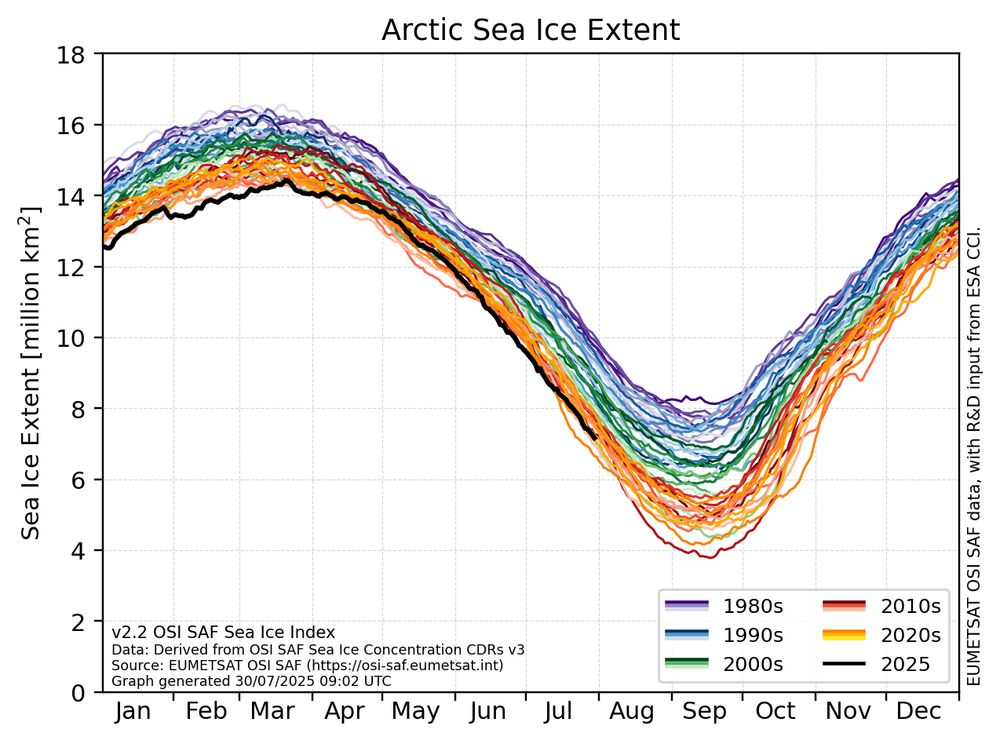MSGID/GENADMIN/JOINT TYPHOON WRNCEN PEARL HARBOR HI//
SUBJ/SIGNIFICANT TROPICAL WEATHER ADVISORY FOR THE WESTERN AND SOUTH
PACIFIC OCEANS/030600Z-040600ZNOV2025//
REF/A/MSG/JOINT TYPHOON WRNCEN PEARL HARBOR […]
[Original post on ai6yr.org]

MSGID/GENADMIN/JOINT TYPHOON WRNCEN PEARL HARBOR HI//
SUBJ/SIGNIFICANT TROPICAL WEATHER ADVISORY FOR THE WESTERN AND SOUTH
PACIFIC OCEANS/030600Z-040600ZNOV2025//
REF/A/MSG/JOINT TYPHOON WRNCEN PEARL HARBOR […]
[Original post on ai6yr.org]


We advise all users to switch to our #AMSR2 based climate products.
for more info: osi-saf.eumetsat.int/community/li...

We advise all users to switch to our #AMSR2 based climate products.
for more info: osi-saf.eumetsat.int/community/li...

Image from nsidc.org/data/g10016/...

Image from nsidc.org/data/g10016/...
Bayesian Transformer for Pan-Arctic Sea Ice Concentration Mapping and Uncertainty Estimation using Sentinel-1, RCM, and AMSR2 Data
https://arxiv.org/abs/2509.25437
Bayesian Transformer for Pan-Arctic Sea Ice Concentration Mapping and Uncertainty Estimation using Sentinel-1, RCM, and AMSR2 Data
https://arxiv.org/abs/2509.25437




Recommend any of them really - Zero Mission, AMSR2 (a top tier fan remake - honestly the dogs bollocks), Super, Fusion, or Dread - pretty good experience.
Don't recommend the OG NES game - it's very aged.
Recommend any of them really - Zero Mission, AMSR2 (a top tier fan remake - honestly the dogs bollocks), Super, Fusion, or Dread - pretty good experience.
Don't recommend the OG NES game - it's very aged.










Explanation of right image in alt text.


Explanation of right image in alt text.

The effect of this new product version update on my visualizations is expected to be minor.
The effect of this new product version update on my visualizations is expected to be minor.
This new dataset was developed in response to the plans to kill SSMIS.
nsidc.org/data/user-re...
This new dataset was developed in response to the plans to kill SSMIS.
nsidc.org/data/user-re...
"NOAA@NSIDC is pleased to announce the release of Sea Ice Index, Version 4.
This new version uses input data from the JAXA GCOM-W1 AMSR2 instrument for 1 January 2025 through forward processing."
"NOAA@NSIDC is pleased to announce the release of Sea Ice Index, Version 4.
This new version uses input data from the JAXA GCOM-W1 AMSR2 instrument for 1 January 2025 through forward processing."
Our Sea Ice Index will be updated from v2.2 (SSMIS based) to v2.3 ( #AMSR2 based) from Friday 01/08/2025 on.
more on: osi-saf.eumetsat.int/community/li...
#climate #arctic #antarctic

Our Sea Ice Index will be updated from v2.2 (SSMIS based) to v2.3 ( #AMSR2 based) from Friday 01/08/2025 on.
more on: osi-saf.eumetsat.int/community/li...
#climate #arctic #antarctic


